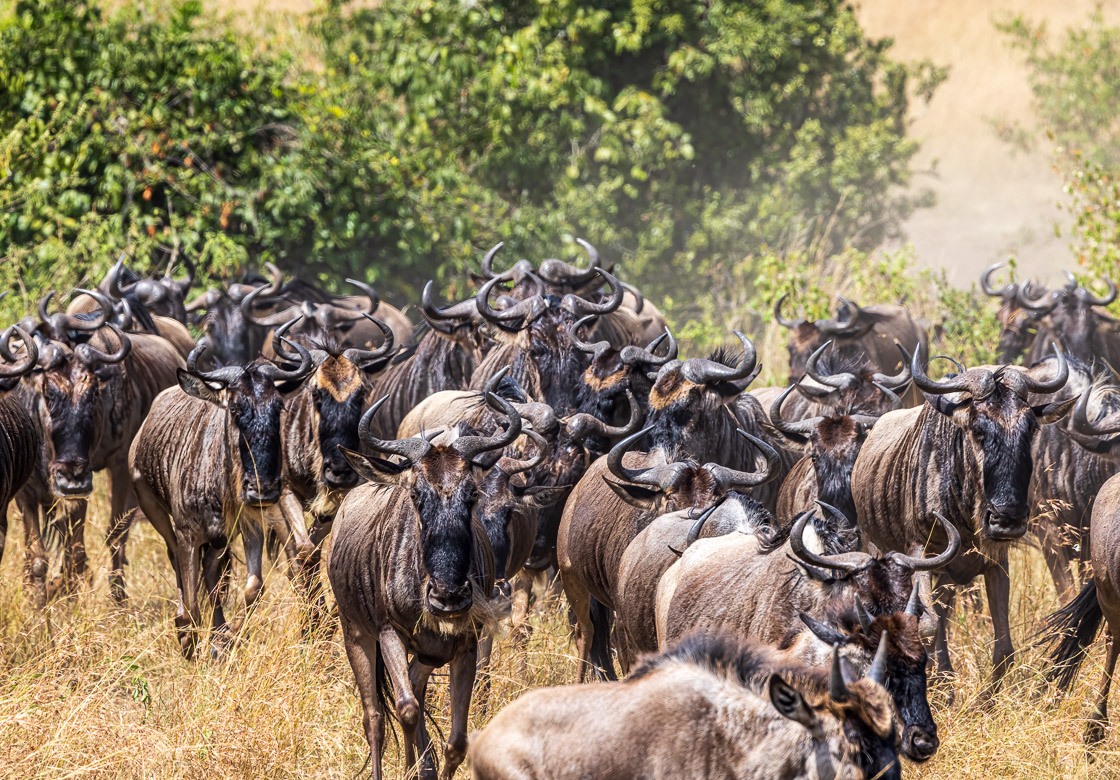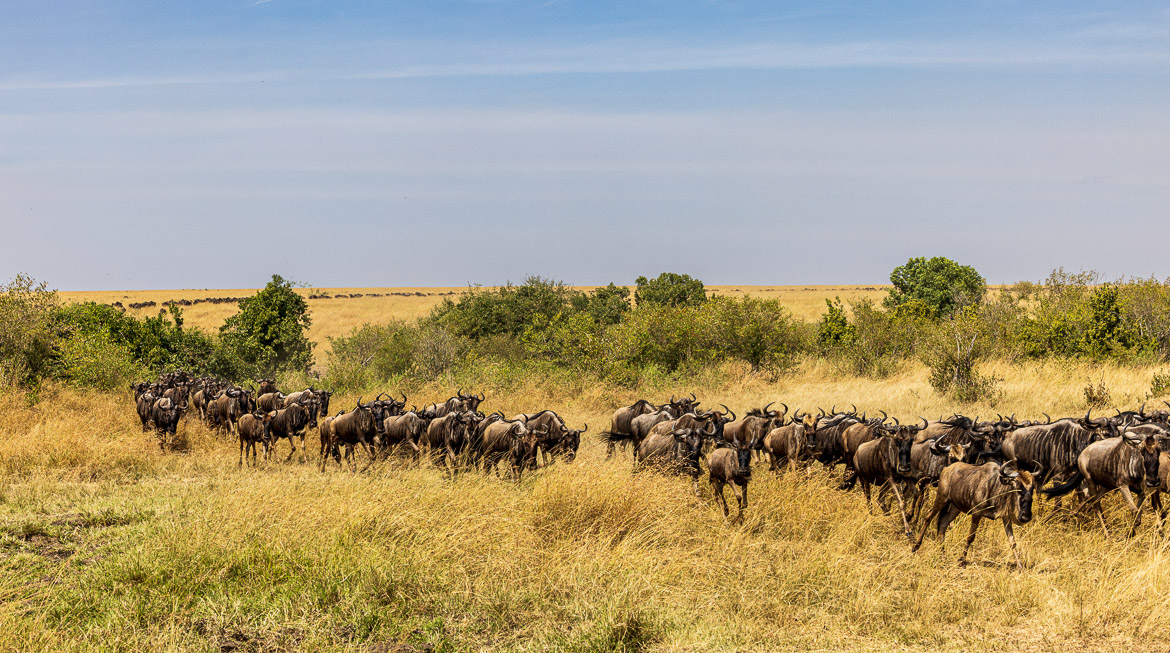
The Great Migration is the movement of nearly 2 million wildebeest and 700,000 gazelles, zebras and other antelopes across Masai Mara in Kenya and Serengeti in Tanzania in an annual circle. They are south in Serengeti in the beginning of the year, when the females give birth. They then move westwards and cross the Grumeti River in Tanzania. They then move further north into Kenya during late summer and cross the Mara River into Masai Mara, where the savannah offers plenty of food. They will then move east and south again after they have fattened up and cross the border to Tanzania (not that any border can be seen except where it follows a river), where they give birth around the area of the Ngorongoro crater and conservancy (see posts later on from Ngorongoro).
All along this path the predators are waiting to attack its prey. Especially tempting is it to attack at river crossings, where both lions and crocodiles are waiting.
We saw a little of the beginning this Great Migration at our safari in July, but late August would have been a better period, if the purpose had been only to watch the Migration. The wildebeest seems fairly stupid. They followed each other like lemmings and sometimes they just abruptly changed direction and then could change back again. The walked or ran in long lines and sometimes they spread out more or stopped totally and just grazed for an hour or for a day before continuing.
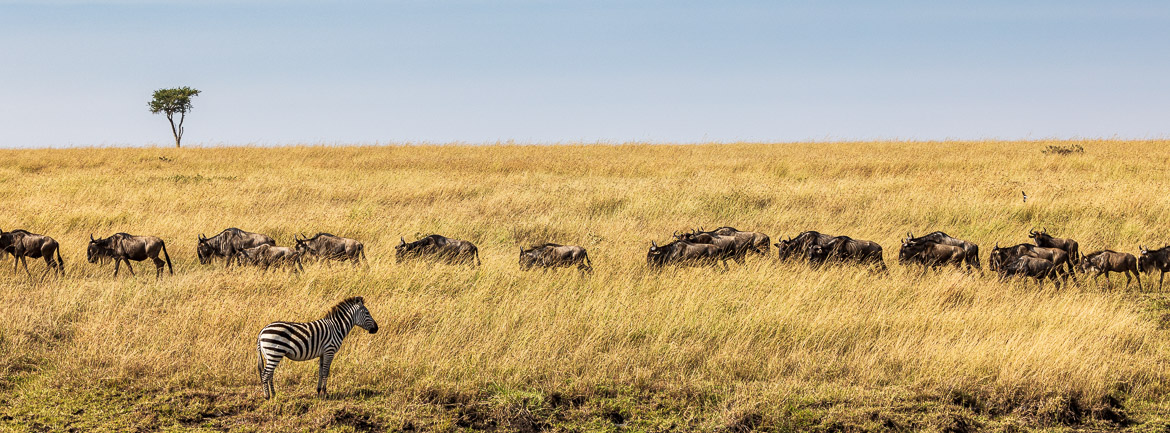
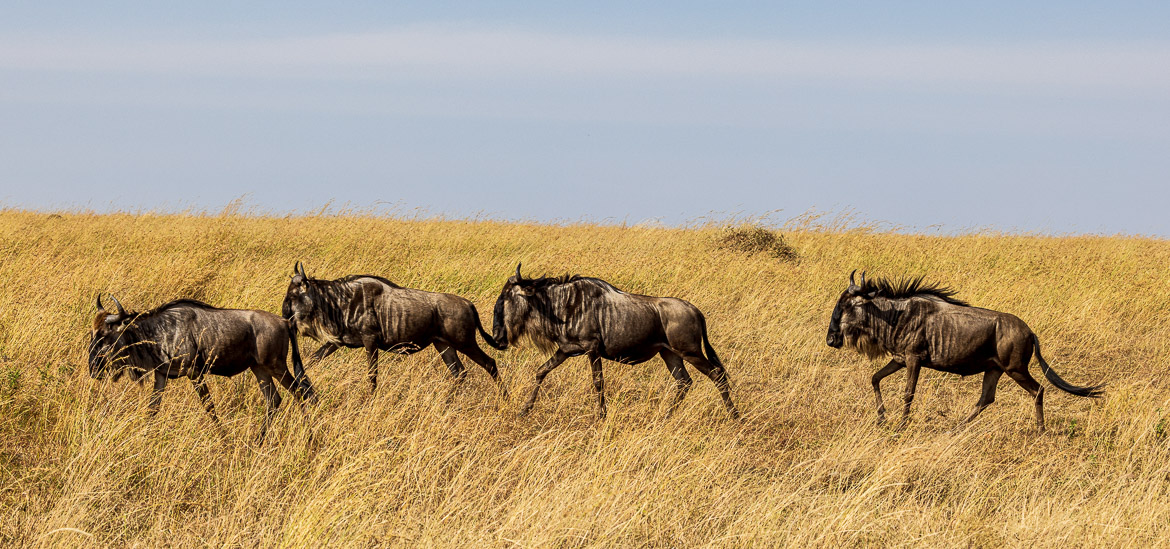
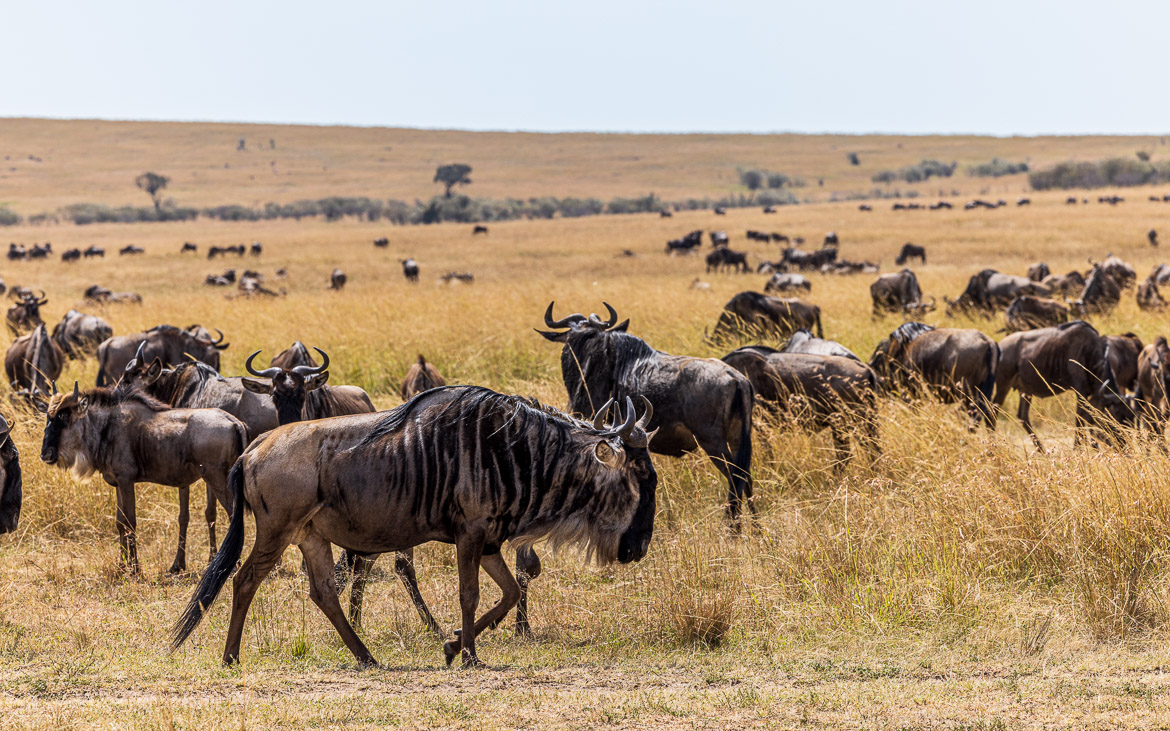
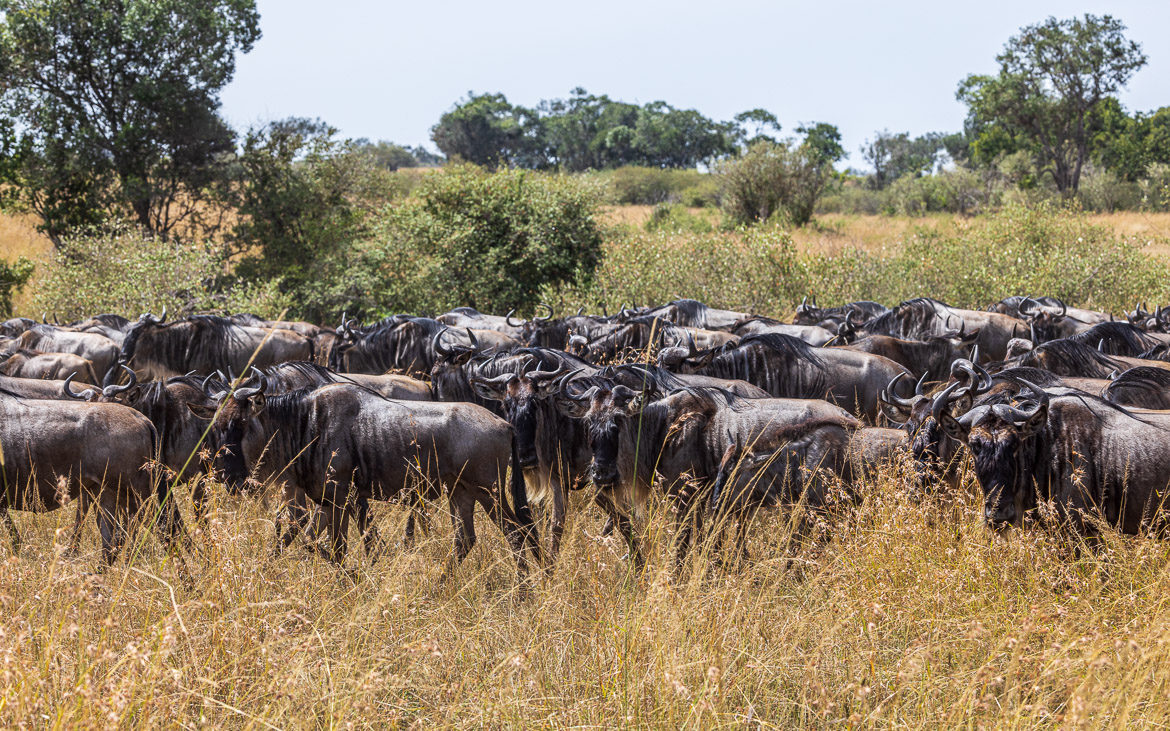
We weren’t able to see any crossings of the Mara River (they will normally not take place until August or beginning September), but we could see the wildebeests doing it across the smaller Sand River, located at the border between Tanzania and Kenya.
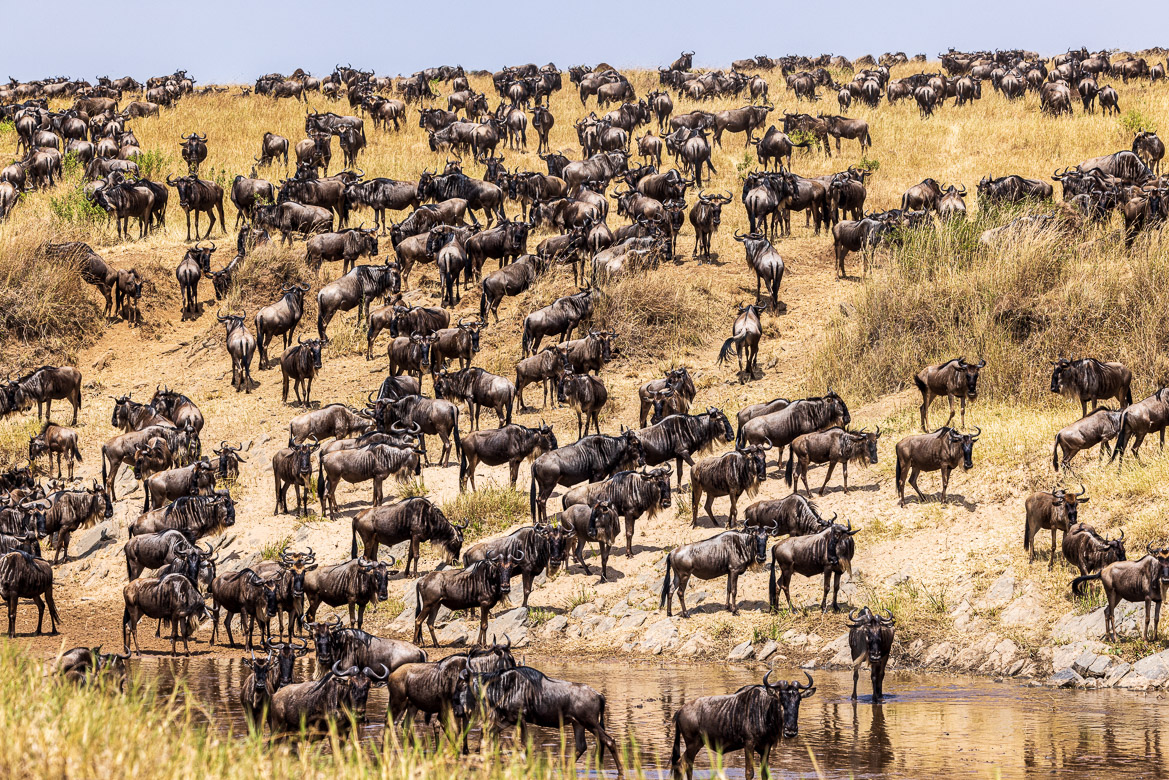
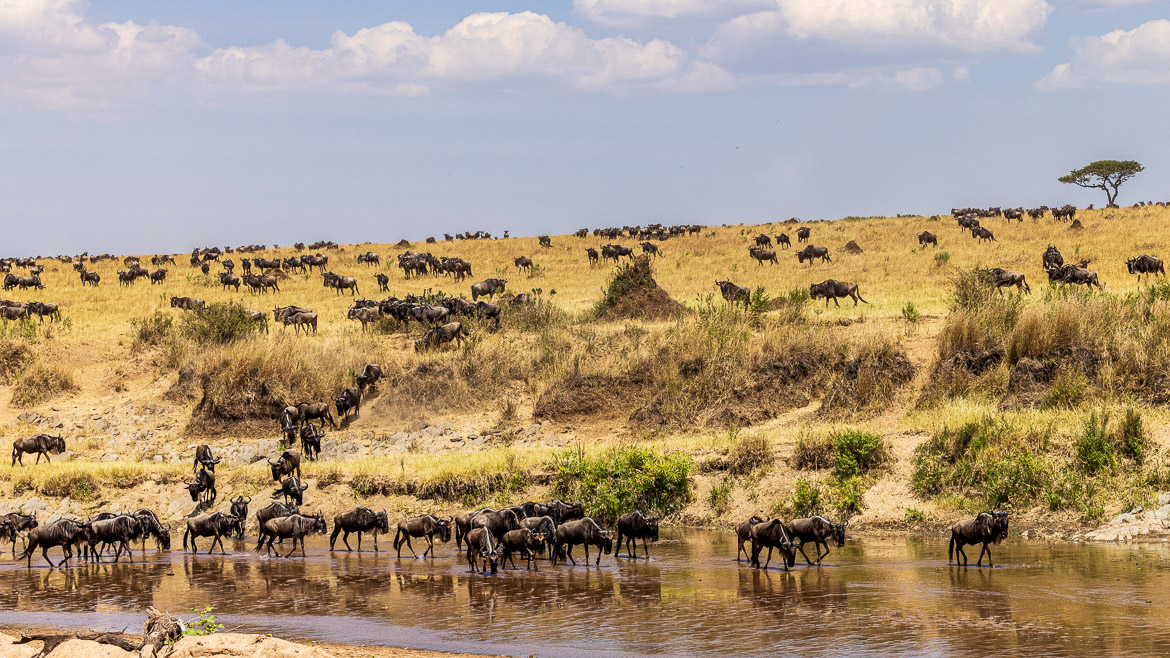
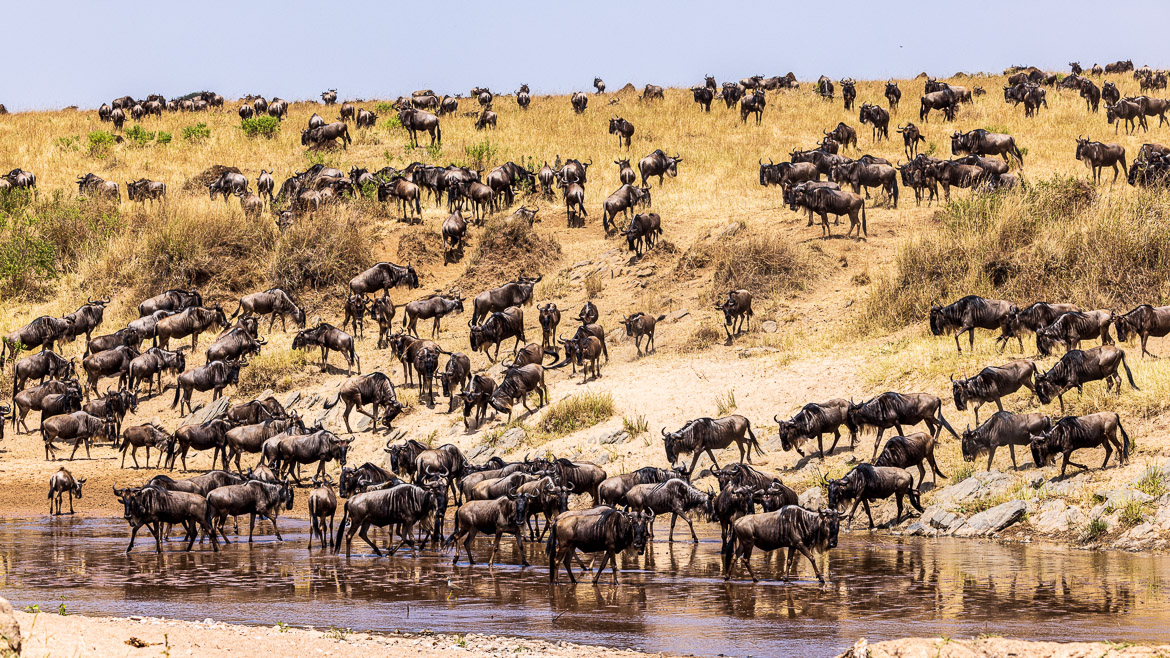
North of Sand River the wildebeests crossed the dried up river bed of Sekera River. Sekera will flow with water in the rainy season, but now it was just a small band of sand curling away to the west until it met the large River Mara. An enormous herd of wildebeests were crossing the river bed and we were positioned on the other side to catch them in camera as they climbed up from the bed. You can see the dust from the river bed and in the background on the other side is a “meandering caravan of wildebeests” running down to the crossing.
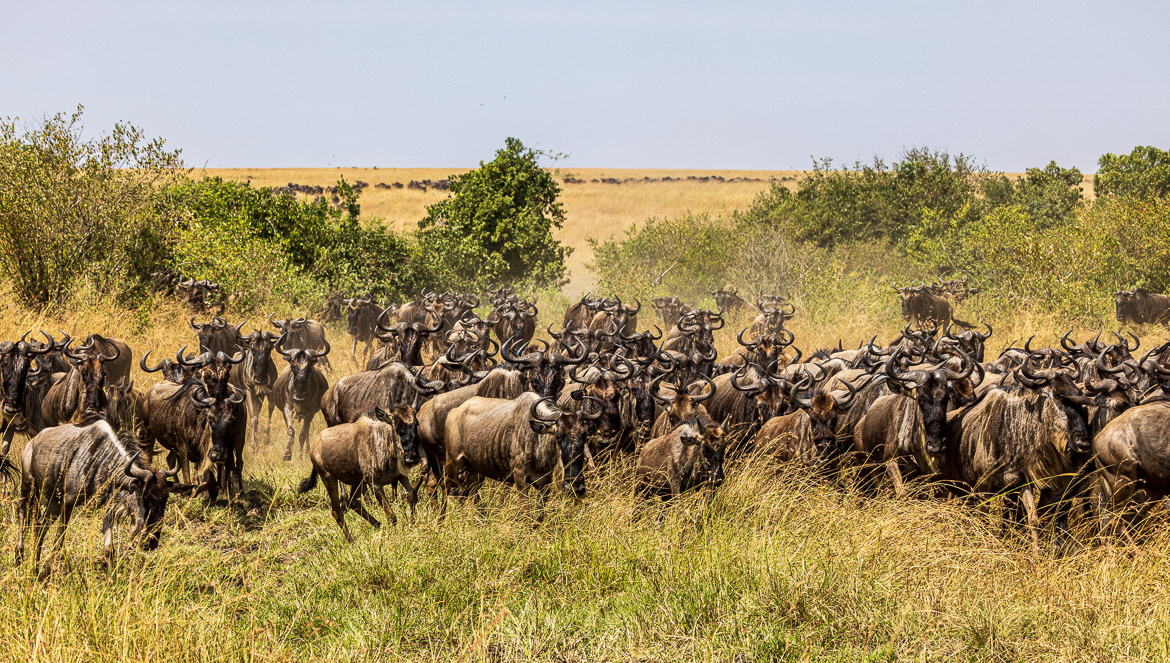
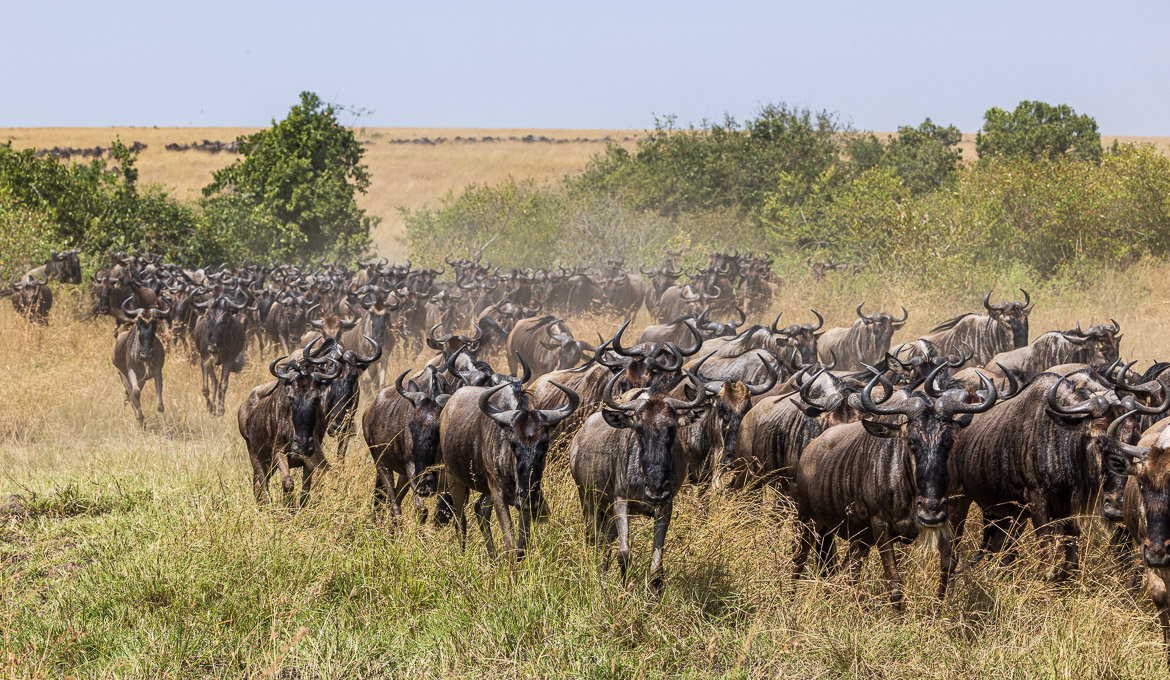
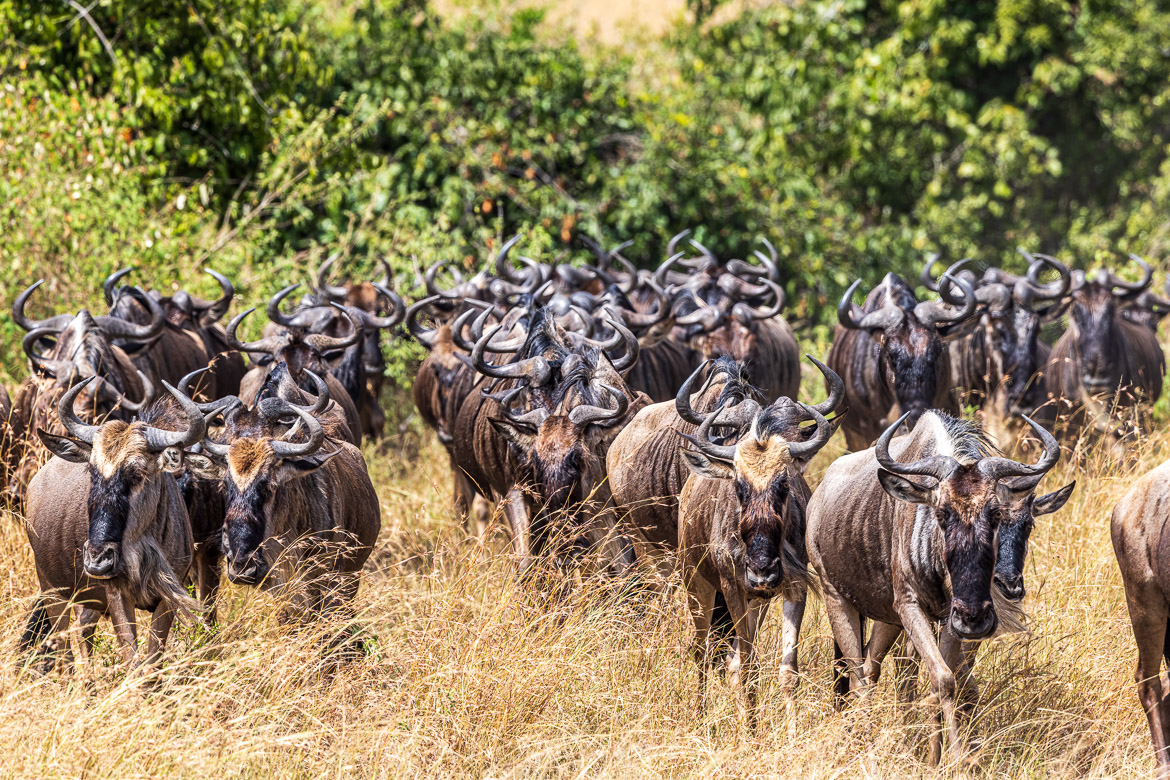
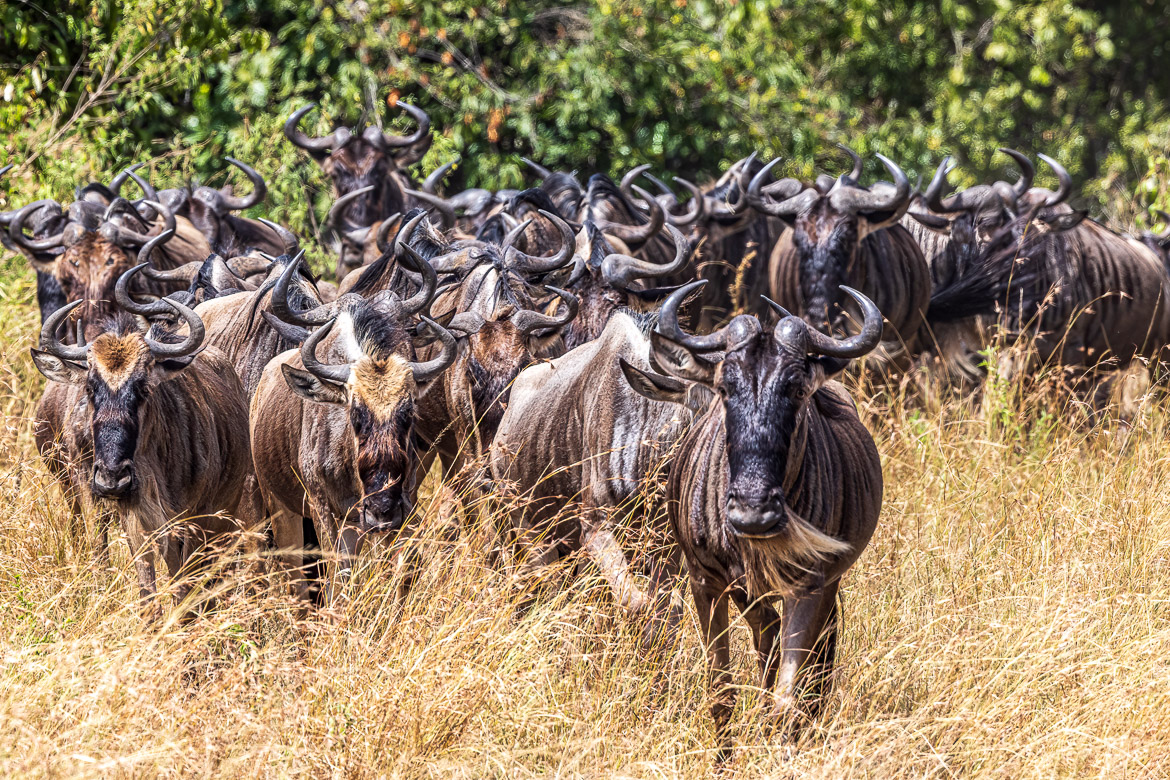
But we had another reason for being positioned just where we were. With the help of Ping, our guide and driver, we had spotted a solitary lion hiding in the bushes just to the left of the crossing path. And we were patiently waiting for the lion to attack an unsuspecting wildebeest. Look at the image below, notice the dust from the crossing of the riverbed and look into the bushes behind the wildebeests. Somewhere there is a lion ready to attack. And in the next post we will show you what happened, when the lion attacked.
